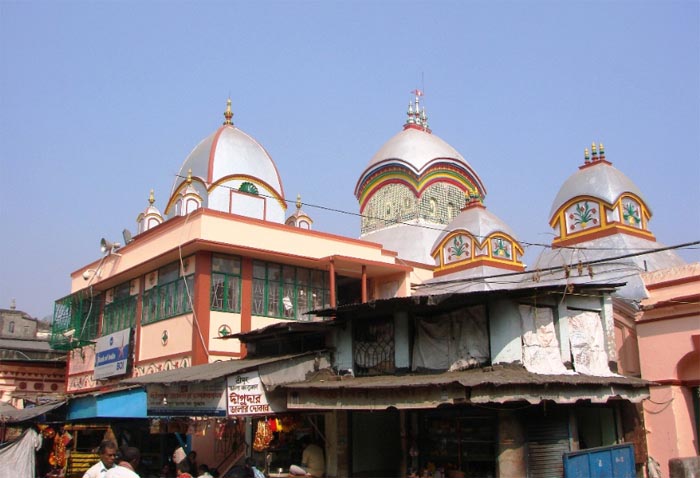Kalighat Kali Temple

Information of Kalighat Kali Temple, Kolkata, West Bengal
The Kalighat Kali Temple is one of the most prominent temples of Kolkata. As the name suggests, the temple is situated in a small locality of Kolkata, Kalighat in West Bengal. The presiding deity of the temple is the famous Hindu goddess called Kali. The temple is supposed to be one among the 51 Shakti Peethas which further adds to the popularity of the temple.
Kalighat Kali Temple Religious Significance
The locality of Kalighat was actually a landing stage or a Ghat sanctified to the goddess and lies on the previous track or route of the popular Hooghly river in Kolkata city. Kolkata was formerly known as Calcutta, a name which is believed to have been obtained from the specific word Kalighat. However, the river Hooghly over the duration of few years has shifted away from the mentioned temple. The temple is presently positioned on the adjoining area or rather land of a petite canal known as Adi Ganga which is known to join the Hoogly river. Thousands of devotees from almost every part of the country flock to this temple despite of the differences that exist in terms of religion. The devotees regularly visiting the temple consider goddess Kali to be more like their human mother and thus, take their household issues to her along with praying to the deity for wealth and success. The devotees return to her in order to convey their gratefulness once their prayers and wishes are answered. The representation of goddess Kali in this temple is quite exceptional as the idol appears completely different from the usual style of other representations of the goddess in Bengal. The complex also houses other small shrines dedicated to Radha Krishna and Lord Shiva.
Kalighat Kali Temple Mythology & History
The temple of Kalighat is acknowledged to be one of the Shakti Peethas in the country out of the total 51 ones. Shakti Peethas refer to those places where the different body parts of Sati fell while Lord Shiva was busy in the act of Rudra Tandava. Kalighat stands for the place where the right foot's toes of Sati or Dakshayani fell. According to the legends it is believed that a follower noticed a bright shaft of light the source of which was traced back to the river bed of Bhagirathi. After sufficient exploration, it was found that the source of light actually came from the portion of a stone which was engraved in the shape of a human's toe. The devotee even discovered a Svayambhu Lingam close by which belonged to Nakuleswar Bhairav and thus, worshipping of goddess Kali commenced in the middle of the deep jungle.
Kalighat Kali Temple Architectural Significance
The Kalighat Kali Temple represents an archetypal pattern of Medieval Bengal architecture. The present structure of the temple is just about 200 years old. However, it needs to be mentioned in this context that the temple originally existed in the form of a tiny hut. A diminutive temple structure was established during the beginning of the 16thh century by King Manasingha. The current temple structure was built under the support and sponsorship of Sabarna Roy Chowdhury who hailed from the renowned Barisha family. The temple was later completed in the year 1809 by Santosh Roy Chowdhury along with his grandson with an investment of approximately INR 30000. The temple also includes a holy water tank which is located towards the south eastern part outside the temple walls. The tank was believed to be bigger in size previously and Sati's right toe was found from this particular tank.
- Andhra Pradesh Temples
- Assam Temples
- Bihar Temples
- New Delhi Temples
- Goa Temples
- Gujarat Temples
- Jammu and Kashmir Temples
- Karnataka Temples
- Kerala Temples
- Madhya Pradesh Temples
- Maharashtra Temples
- Odisha Temples
- Punjab Temples
- Rajasthan Temples
- Sikkim Temples
- Tamil Nadu Temples
- Telangana Temples
- Uttar Pradesh Temples
- Uttarakhand Temples
- West Bengal Temples